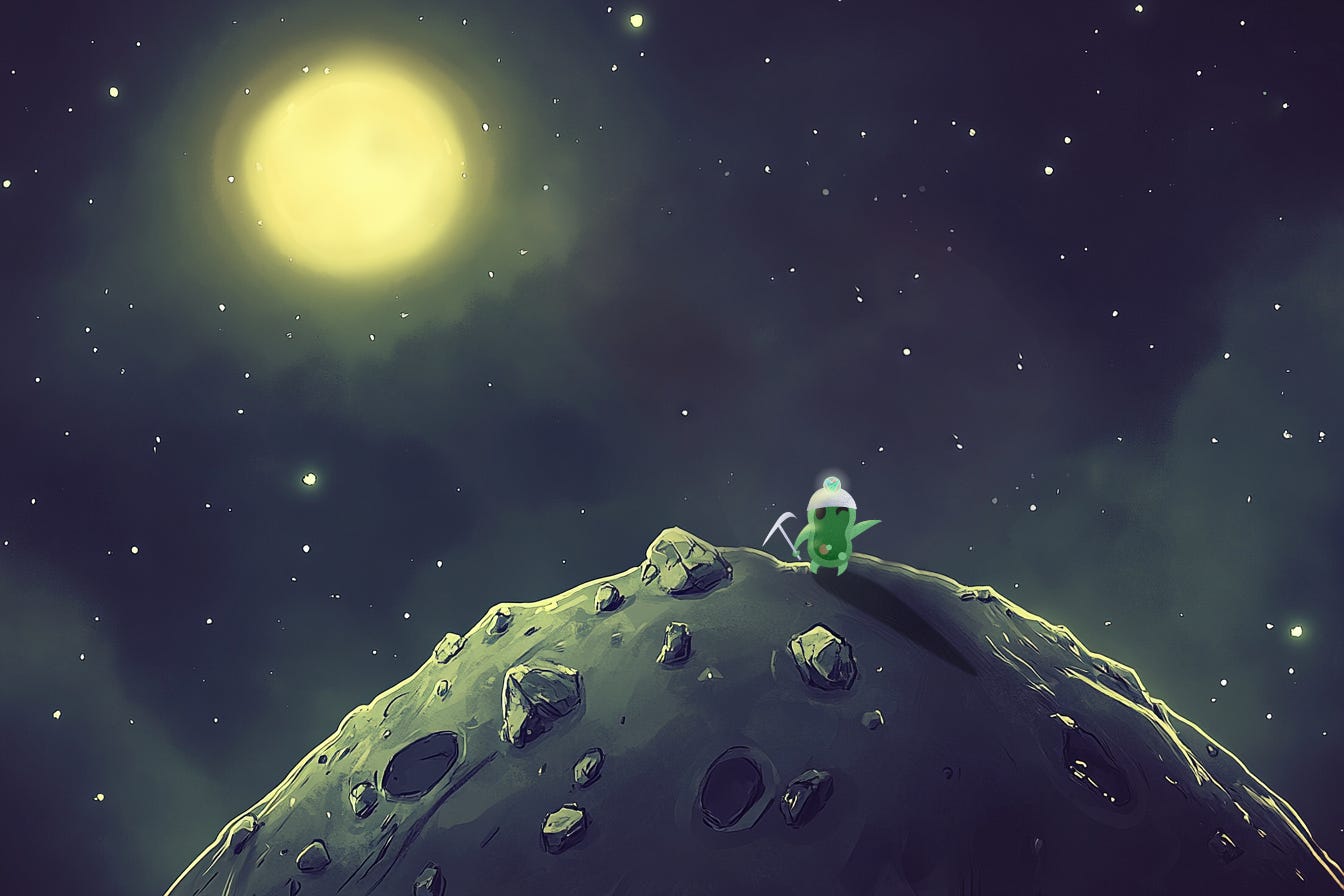That’s one small step for man… one giant leap for mankind.
On July 20th, 1969, Neil Armstrong took us all firmly by the arms, looked us right in the eyes, and told us - this isn’t just me standing on the moon. It’s everyone. As a species, we’ve been captivated by space exploration since the ancient Mayans and Aztecs - but only then was the dream realised. And from there, popular culture exploded.
27th December, 1977; Star Wars made its very first headlines across the globe, with new instalments doing the same every subsequent decade. Dune, Star Trek, Doctor Who, Halo - the media since that day has been held hostage by the assertion that the lunar landing was not just a privilege for a select few, but was One giant leap for mankind.
And yet, half a century later, the costs associated with space travel are still so prohibitive that it really was no more than a dream for the 99.99% of us. So we keep pioneering - keep bringing costs down. And lucky for us, there is a way to make space travel much cheaper. It doesn’t involve space elevators that would have to dwarf the Burj Khalifa, or huge electromagnetic moonshot-cannons to launch raw materials into orbit. Instead the answer is already here, thriving in the soils beneath our feet.
Biomining. Why, and how, might this be the solution to accessible interstellar travel?

In-situ resource utilisation through the use of biomining bacteria - as demonstrated here by our bio-mascot - may present the next breakthrough for cheap interstellar travel.
What is biomining?
In short, biomining is any process that uses living organisms to extract minerals from ores and other sources.
…But this doesn’t really answer any questions. Why would extracting metals with living organisms instead of, say, industrial machinery make space flight any cheaper? If we’re still extracting the metals and other resources down here on Earth, it doesn’t matter if it was by a microbe or a 1,000-tonne mining behemoth. The cost of sending a rocket into orbit and beyond remains the same - no matter matter if was built from biologically-mined metal or traditionally-mined metal.
Putting aside hypothetical cost savings on producing the metals and fuels for now, this is largely true. Instead the trick is in using biomining for in-situ resource utilisation; ISRU.
What is ISRU?
ISRU, which NASA has identified as one of the next frontiers for interstellar cost-savings, is the concept of harnessing local resources at mission destinations instead of taking all the needed supplies from Earth. NASA’s stated aim is to make use of ISRU to enhance the capabilities of human exploration. The most prominent example of ISRU is the use of sunlight for solar power aboard various rovers and spacecraft; including the International Space Station (ISS), which has operated on solar energy since the year 2000.
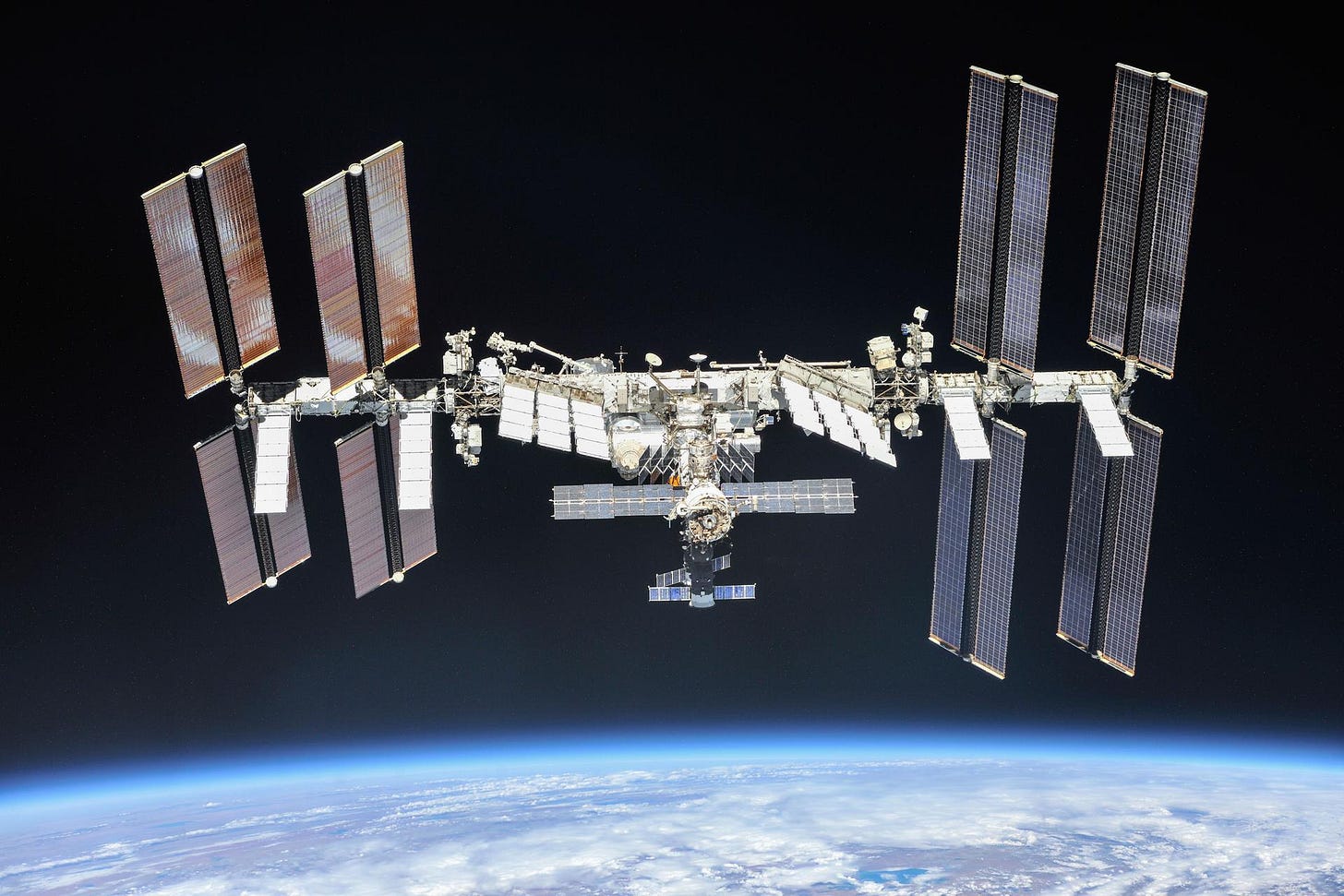
The International Space Station has operated on solar power since November, 2000, making it one of the primary examples of outer-space in-situ resource utilisation. Photo credit: NASA
The costs saved from using locally produced solar power aboard the station - as opposed to pre-charged batteries or even fuel-based generators - are incalculable. Other missions costs, however, are not. We know from public data that The Mars Exploration Rover mission racked up $1.08 billion in costs. Of that the vast majority (specifically $744 million) was spent on the spacecraft development and launch.
Subsequent missions have not become much cheaper. Sending the Curiosity Rover to Mars cost NASA about $2.5 billion. Estimates vary, but the associated rocket fuel for just the rover alone (not including the rest of the fuel used by the rocket) cost somewhere around $50 million.
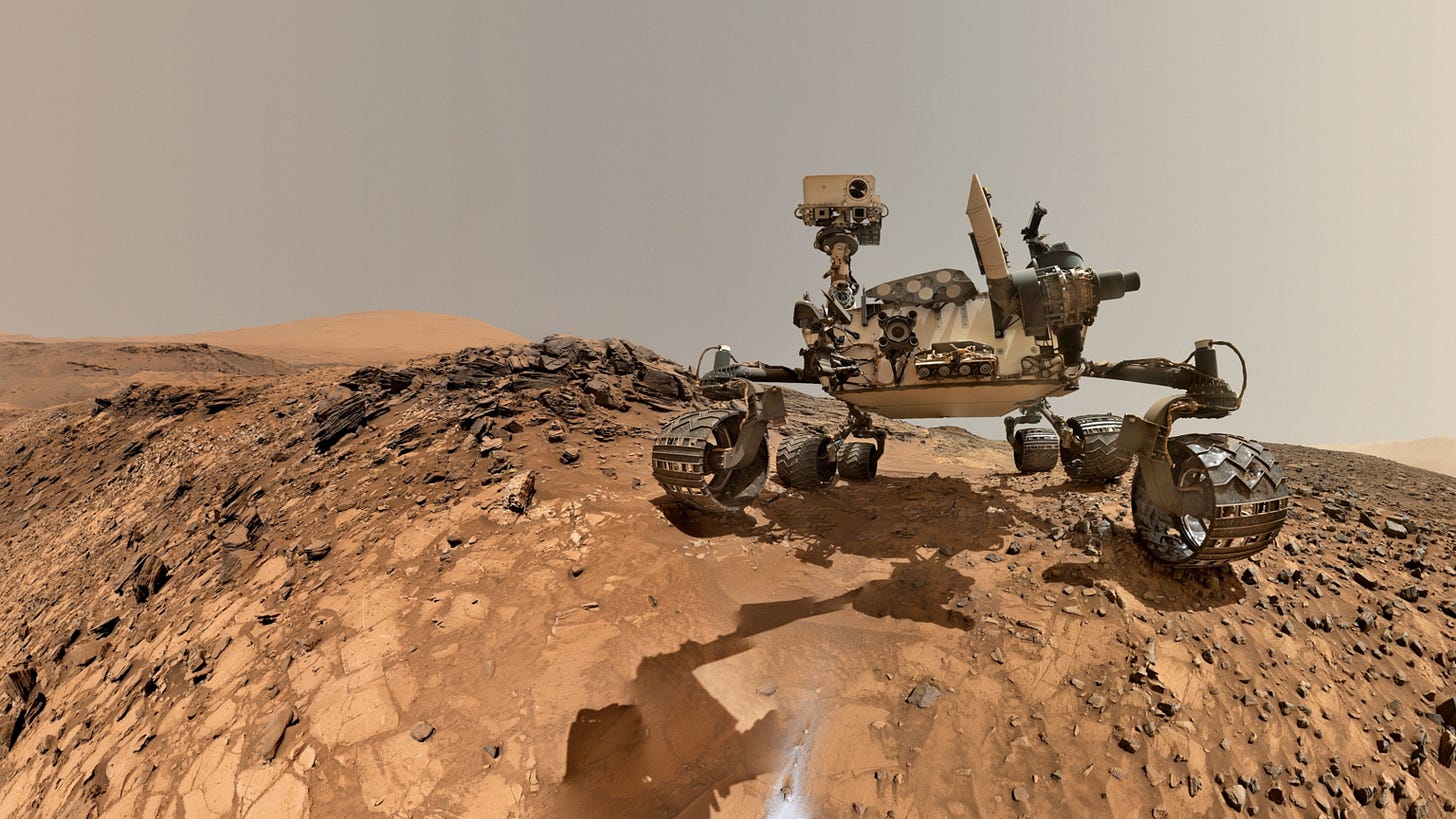
The mission to send the Curiosity Rover to Mars cost a grand total of $2.5 billion, with an estimated $50 million of the budget going toward covering the rocket fuel required to compensate for the 990kg robot. Photo credit: NASA / National Geographic
One of the reasons such journeys have been so expensive is that the more rocket fuel you add, the greater the mass of your rocket, and so the worse your fuel-to-speed ratio becomes. It’s a kind of exponential relationship, whereby just getting out of the Earth’s atmosphere makes up the majority of the cost of a mission to space.
Now imagine if instead of taking all the fuel and necessary supplies from the Earth’s surface the entire the way to Mars in one uninterrupted journey, we instead harnessed them from space; the same as we do with sunlight. Enormous amounts of weight could be shaved off from the launch if the rocket had re-fueled in outer-space. In fact, what if we had the facilities to build the Curiosity Rover out there aboard the International Space Station? That would be $50 million saved in fuel costs alone. How many untold billions could be saved if we built entire rockets out there?
How do we accomplish ISRU in space?
It was a major accomplishment to send a working solar panel into space as part of the ISS - as well as to have it power the station for well over two decades now. But what would we need to mine metals in-situ - say, from an asteroid? We can form a rough estimate by looking at recent mission costs. OSIRIS-REx, the latest NASA mission to touch down on an asteroid, cost $1.16 billion. An eye-watering sum, but at first glance it may still be profitable - plenty of asteroids are predicted to contain $50 billion worth of platinum.
The problem however lies in the scale. OSIRIS-REx collected a tiny sample of material. Collecting all that platinum available would cost untold magnitudes more. The Bucyrus RH 340, one of the world’s largest excavators, weighs in at well over 500x the mass of the Curiosity. If it cost $50 million in fuel to send up the Curiosity, how much would it cost to send an entire mining rig, given the exponential fuel costs associated with increasing payload mass?
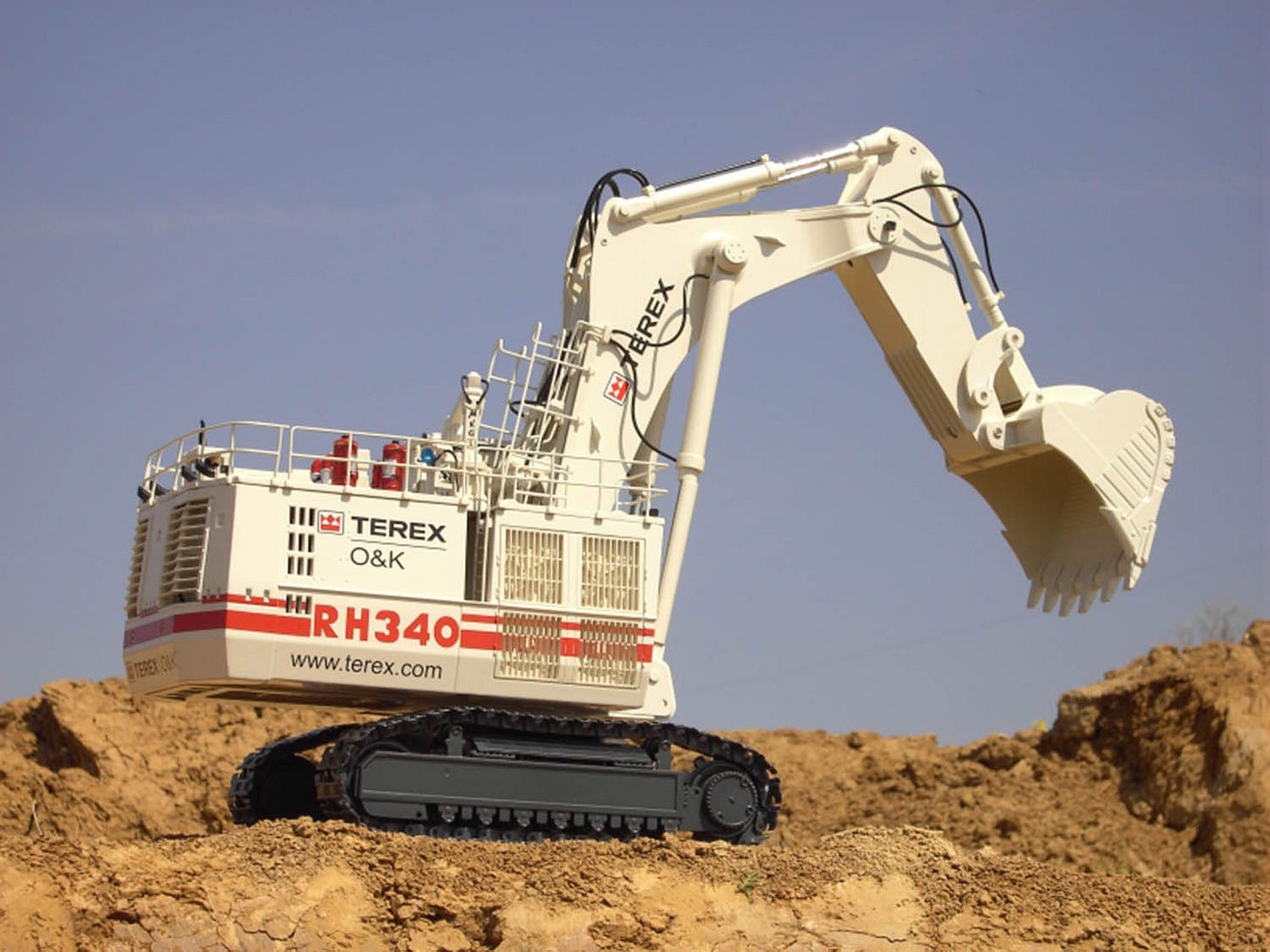
The Bucyrus RH 340, one of the world’s largest excavators, weighs in at over 550 tonnes. The Curiosity Rover, in contrast, weighs less than a single tonne. Photo credit: Proxibid
It’s one thing to harness solar energy from space. It’s clearly another thing entirely to extract the resources needed to build a 990kg state-of-the-art rover out in space. Not to mention an entire rocket. Suddenly sending up a solar panel looks trivial in comparison. To accomplish profitable ISRU for the metals and minerals needed, we would have to go very much in the other direction. But is that even possible? Could we, say, send up something that could take on the whole job of a mining rig and yet weighs over 500x less than the Curiosity? What about 1,000x less? What if we could send up a single kilogram worth of this technology, and then have it multiply out there in space?
Biomining in space - is it feasible?
It would take tons of fuel, as well as other resources, to send up conventional mining equipment into space. Instead, what we could do is send up a few kilograms of bacteria. Specifically biomining bacteria. That is, of course, if biomining works out there. Asides from the vacuum of space, a major problem we would face using biomining is that Mars, the moon, and asteroids - they all have much lower gravity than Earth.
In July 2019, the European Space Agency undertook a mission called the Bio-Rock experiment, in which they sent various biomining-capable microbe cultures onboard the ISS to study their efficacy under different gravitational conditions. They opted for three types of bacteria that could leach valuable minerals from basalt, since this represents one of the most common rocks found on extra-terrestrial bodies. The researchers tested each under three levels of artificial gravity through use of a centrifuge — near-weightlessness such as on an asteroid, Martian gravity, and Earth gravity.
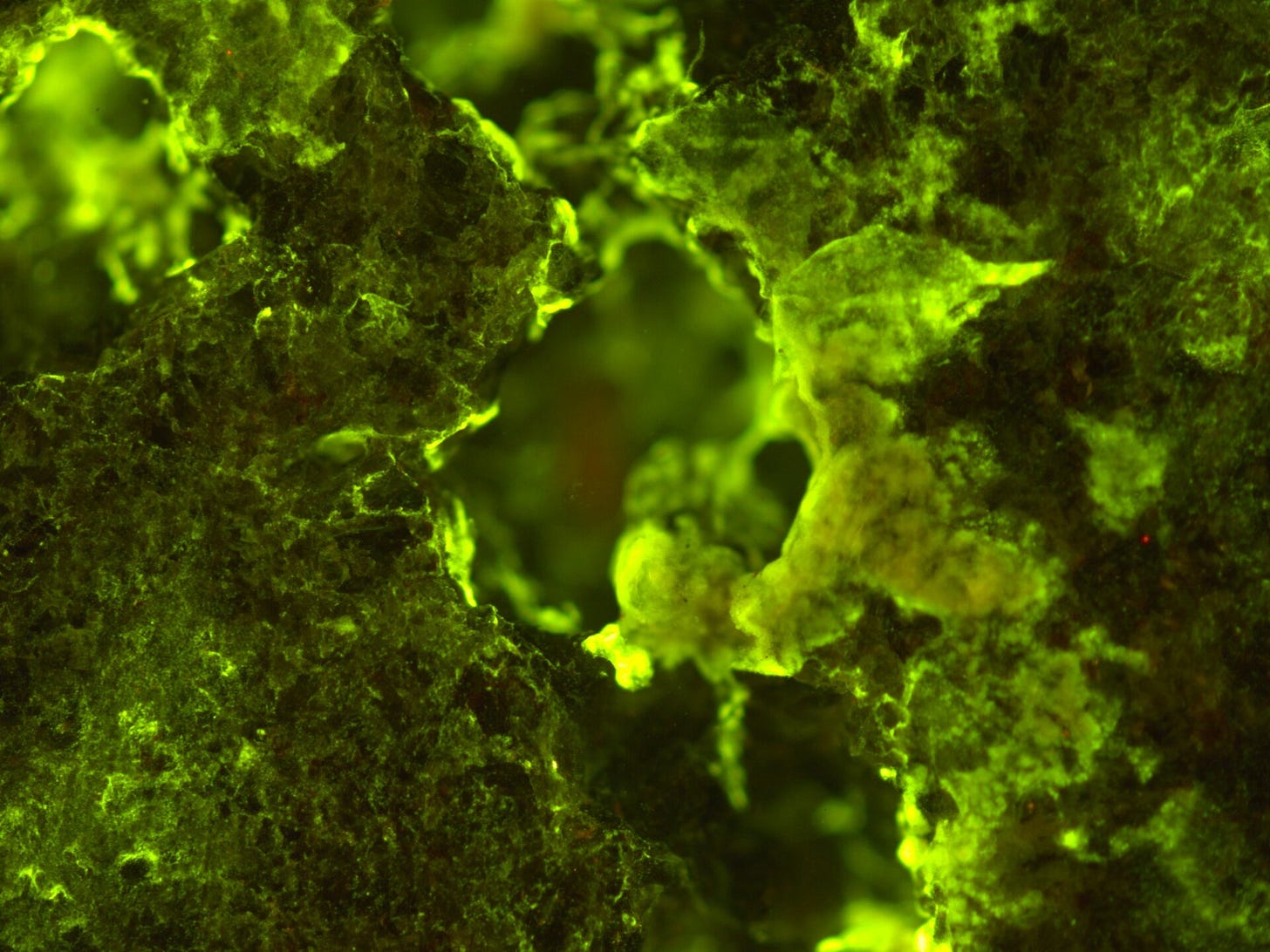
A fluorescence-visualisation of Sphingomonas desiccabilis growing on basalt rock. (Image credit: UK Centre for Astrobiology/University of Edinburgh)
One particular bacteria, Sphingomonas desiccabilis, emerged as a star performer (pun intended) with mineral-extraction abilities unhindered regardless of the conditions. Bacillus subtilis, however, exhibited reduced biomining efficiency in low gravity - whilst the third, Cupriavidus metallidurans, failed to extract minerals altogether whilst aboard the ISS.
Regardless of anything else, it’s clear that whichever microbial chassis we pick for the job will need to be capable of handling the inhospitable environment that is outer-space. Thanks to this experiment however, we now know that bio-mining in space could potentially work. We just need to find the right microbes for the job and get them ready for the task.
How do we get biomining ready for space?
To the late Stephen Hawking, space travel was more than just a matter of rocket science, Delta-v optimisations, and a focus on how to bring profit margins within acceptable limits. To him, “to confine our attention to terrestrial matters would be to limit the human spirit”.
On Earth, biomining represents a generational leap in metal extraction - it works efficiently on low quality sources, doesn’t require gigawatts of energy or metric tons of toxic chemicals, and could avoid the thus-far unavoidable ethical and environmental implications.
And yet when you turn your eyes to space, it becomes even more profound - it could be what we need for true outer-space ISRU. That’s why the ValleyDAO community is proud to be offering up to $200k in crowd-sourced funding for independent and academic researchers who are developing biomining technologies. The problem lies in that biomining is currently a largely undeveloped field; published research in the area is sparse, and investment capital difficult to come by - even for purely terrestrial applications. Our aim is to tackle that problem.
You can apply for up to $200k in research funding by clicking here.
It’s but one small step to apply, yet one giant leap toward getting research out of the lab and into the field.
If you or someone you know is working on this, we encourage you to visit our website and check out our funding application.


